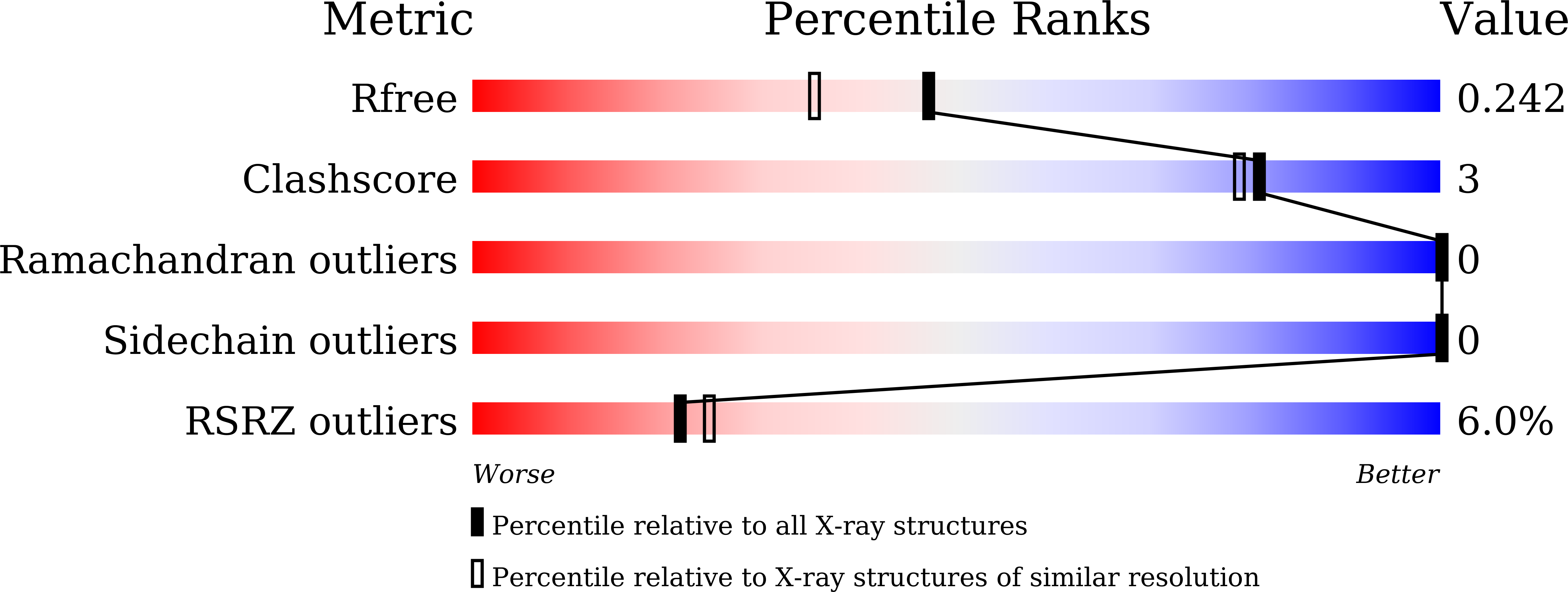
Deposition Date
2024-03-17
Release Date
2024-05-15
Last Version Date
2024-05-15
Entry Detail
PDB ID:
8YPJ
Keywords:
Title:
Cyrstal structure of the MazE-mt10 Antitoxin from Mycobacterium tuberculosis
Biological Source:
Source Organism:
Mycobacterium tuberculosis (Taxon ID: 1773)
Host Organism:
Method Details:
Experimental Method:
Resolution:
1.91 Å
R-Value Free:
0.24
R-Value Work:
0.20
R-Value Observed:
0.20
Space Group:
I 2 3


